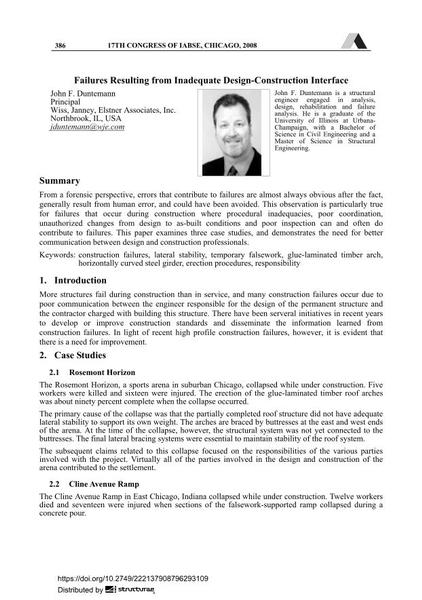Failures Resulting from Inadequate Design-Construction Interface

|
|
|||||||||||
Bibliographic Details
| Author(s): |
John Duntemann
|
||||
|---|---|---|---|---|---|
| Medium: | conference paper | ||||
| Language(s): | English | ||||
| Conference: | 17th IABSE Congress: Creating and Renewing Urban Structures – Tall Buildings, Bridges and Infrastructure, Chicago, USA, 17-19 September 2008 | ||||
| Published in: | IABSE Congress Chicago 2008 | ||||
|
|||||
| Page(s): | 386-387 | ||||
| Total no. of pages: | 6 | ||||
| Year: | 2008 | ||||
| DOI: | 10.2749/222137908796293109 | ||||
| Abstract: |
From a forensic perspective, errors that contribute to failures are almost always obvious after the fact, generally result from human error, and could have been avoided. This observation is particularly true for failures that occur during construction where procedural inadequacies, poor coordination, unauthorized changes from design to as-built conditions and poor inspection can and often do contribute to failures. This paper examines three case studies, and demonstrates the need for better communication between design and construction professionals. |
||||
| Keywords: |
responsibility lateral stability construction failures temporary falsework glue-laminated timber arch horizontally curved steel girder erection procedures
|
||||
